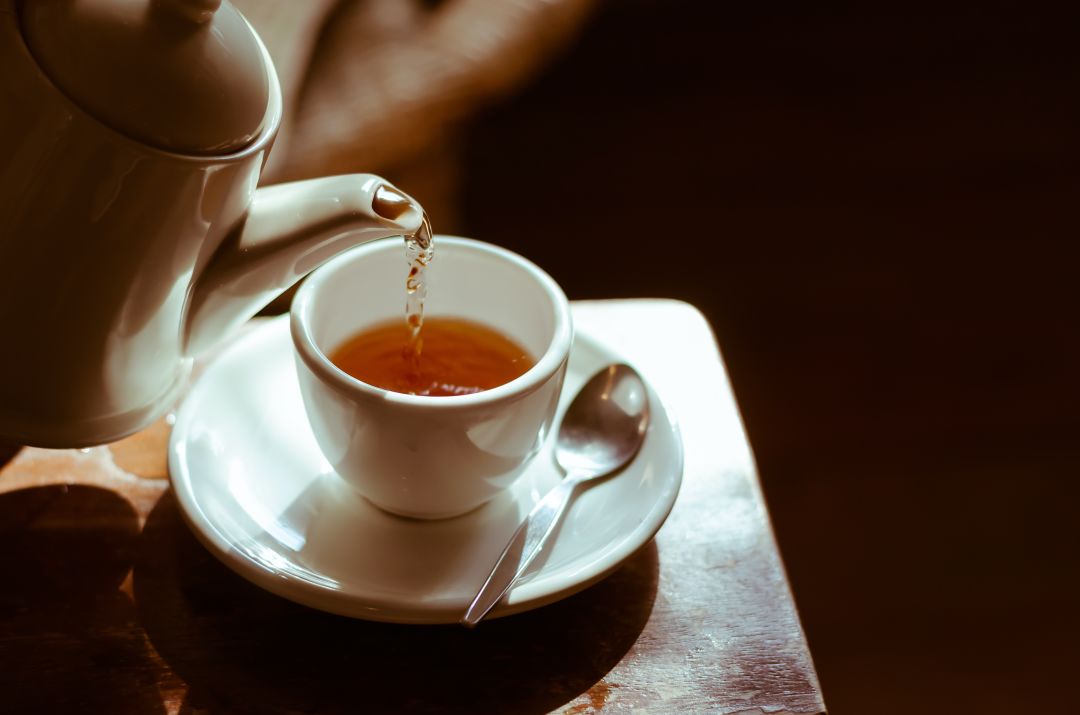The Health Benefits of Tea

Image: Wiro.Klyngz/Shutterstock.com
The art of making tea has been around for thousands of years—used in traditional and ceremonial practices as well as promoting social interactions between people.
Just in time for National Tea Day, we spoke with Michael Duranko, tea expert and manager of Local Tea Company in Sarasota, to find out his top 10 favorite teas, along with tips and tricks for how each kind may improve your health.
Black Tea
Black Tea comes from a plant called Camellia Sinensis and has a bitter flavor due to its oxidation process. Oxidation occurs when tea leaves are exposed to air, which intensifies black tea's flavor.
"There are less antioxidants in this type of tea," says Duranko. However, black tea can keep your teeth and bones strong, and improve the look of skin. Black tea also contains caffeine, so it's best to drink in the morning or whenever you need a pick-me-up.
Oolong Tea
Oolong tea is similar to black tea—it is caffeinated and also comes from the Camellia Sinensis plant. So, naturally, the best time to drink it would be morning or whenever you need a boost. Duranko says that oolong is only semi-oxidized, making the flavor strong, but still full of antioxidants—"more than black tea," he says.
Pu Erh Tea
Pu Erh tea falls under the black tea umbrella, meaning it also comes from the Camellia Sinensis plant, is post-oxidized and is caffeinated. "Pu erh tea has a mushroom flavor because it is plucked and stored in a cave for several years to enhance its unique flavor," says Duranko. It's also reported to have the ability to lower cholesterol, improve digestion and help relieve hangover symptoms.
Green Tea
Green tea does not go through the same oxidation process as oolong or black teas. Instead, tea leaves are plucked and crushed and the flavor is extracted from the leaves. A cup of green tea has almost the same amount of caffeine as a cup of coffee, about 30 to 50 milligrams, so it's the perfect alternative to a morning cup of joe.
Health-wise, green tea is high in antioxidants and, like back tea, can help improve your skin, teeth, bones. The antioxidants are also reported to help relieve cold-like symptoms when ill.
Matcha Green Tea
Matcha, another type of green tea, is made from leaves that are crushed into a fine powder for consumption. Matcha has also become an increasingly popular drink in the morning, due to its delicious flavor, caffeine factor and ability to be mixed with milk for a latte.
"Matcha is extremely high in antioxidants because the whole tea leaves are consumed," says Duranko. "It has a more grassy flavor."
White Tea
White tea is also caffeinated, but it's unlike all the other teas when it comes to its preparation and picking process. Only two leaves and a bud are plucked for each batch.
"The leaves are withered and dried; it tastes very, very light because it is not oxidized," says Duranko. It's also the least processed type, with the same amount of antioxidants and nutrients as superfoods like wheat grass. Duranko says white tea might even have the potential to help drinkers reduce the risk of heart disease, lose weight, improve teeth and skin health.
Rooibos Tea
Rooibos is a caffeine-free tea, so you can be consume it any time of the day without worrying about those caffeine jitters. Fun fact: it's also not technically a tea. It's derived from a plant grown in a very specific area of South Africa because of nutrients in the soil.
Rooibos is a perennial bush, meaning it is grown throughout the year. When prepared, the whole bush is cut down, chopped into smaller sections and dried in the sun. Rooibos, like other teas, is high in antioxidants.
Honeybush Tea
Another exotic, caffeine-free variety, honeybush, is made from a plant grown in Africa. It has a similar taste to rooibos tea, but is sweeter in flavor. Despite not being caffeinated, it has the potential to heighten awareness, energy and clarity along with aid digestion.
Yerba Mate
Yerba mate is another Instagrammable tea that you may find Gen Z guzzling—especially from the brand Guayakí. It is a caffeinated tea grown in Brazil, Uruguay and Argentina, where the leaves are crushed into powder. It has a long ceremonial history in South America, where people drink it in groups, and a grassy, earthy flavor. This tea has been reported to potentially aid longevity, burn calories and improve digestion.
Herbal Teas
Herbal teas are caffeine-free. There are many varieties, all made from or infused with dried flowers, fruit and herbs. They are divided into two categories: a tea or a blend.
"Herbal teas are purely one flavor, whereas herbal blends have two or more flavors combined together," says Duranko. They also have a variety of benefits. Chamomile herbal tea promotes sleep, while pure peppermint herbal tea can keep you more alert and hibiscus has been reported to lower blood pressure. Each concoction with offer its own unique benefits.
New to the world of tea? Try these tips for great sips
Add sweet flavors. Things like sugar, honey, cinnamon or berries will enhance flavor.
Share your tea with family and friends. Gifting tea and drinking it in groups is a popular activity in many cultures.
Check with your doctor if there are any teas you should avoid when taking certain medications. Many people on the blood thinner Coumadin cannot drink green tea, for example.
For more information on teas, check out the Local Tea Company's website.



